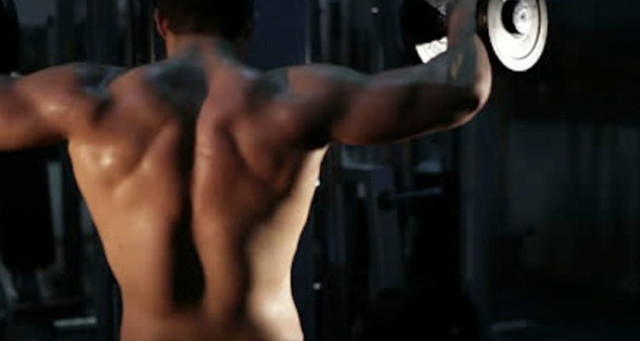The workout of the Dorsal is a workout ridge generally less sought after by patrons of the gyms when compared with the training of the pectoral muscles, but it is considered essential for those who engage in body building.
When it comes to muscles generally refers to the large dorsal muscles trapezoidal arms that join the trunk connecting the humerus to the sacral vertebrae. The workouts also undertake the dorsal muscle’s biceps. For its size, the latissimus Dorsal muscle is one of the biggest pots of man as it covers the whole back up axillary arch. Its function is to rotate the arm inside and move backwards, in case the fixed point is the humerus, will be the trunk that will approach (the typical example is the suspension to the bar).
The distribution of the muscle fibers of the latissimus dorsal is divided into equally resistant fibers (type I) and fast-twitch fibers (IIb). The latissimus dorsal muscle is clearly visible and easy to define and sculpt with training as it is a superficial muscle. The machines provide the backbone for lifting and lowering the arms while sitting (machine forward or behind the neck) or pulling them toward your chest with ropes.
Back muscles and sports activities.
The latissimus dorsal is a muscle that has great importance in different sporting or leisure activities such as, for example, free climbing, weightlifting, rowing (probably the sport which most agree this muscle), push-ups at the bar and so on.
The training of the back muscles.
The methods of training the back muscles are numerous, but here are some examples to illustrate a good workout these muscles. Lat machine – Grasp the rod end of the car holding the palms of the hands facing the wall, and start the year with a downward pull on bringing the bar to touch the upper chest and then, quite slowly, it returns to the position of beginning. Before starting the traction you need to breathe, while the exhalation should be carried out when the rod touches the chest. The loads to be used can be chosen by setting on its own weight.
Initially, you can start with loads of about half of its weight, subsequently will increase gradually. Depending on the load you can choose the number of repetitions: 6 reps (maximum load) until you get to 50. The exercises pulldowns, like the rest of the exercises carried out in tension, are of no danger to the spine.
A variation of this involves the auction of machinery is to touch the nape of the neck rather than the upper chest. The other directions are the same for the year indicated above. In this exercise, the stress on the back is higher, but surely the movement will be less natural.
Rower with barbells – From a standing position bend the trunk forward to putting 90 degrees. At this point, with your palms facing ourselves, we wield the rocker taking a gap of about half a meter. It carries an inspiration and runs a traction arm upward to make the barbell touches your chest, at this point, exhaling. You return to the starting position. This exercise can strain your back, and it is not appropriate to run it using heavy weights. You can perform 3 sets of 15 repetitions, and then, with time, gradually. It may increase the number of repetitions bringing to 30.
Pull over barbell – Hold a barbell with both hands. Then we lie down on a bench with his arms outstretched. At this point, it designs a wide semicircle to bring the barbell behind your head trying to get out as much as possible and, without pausing in the final position. It returns to the initial one, and then you repeat the movement. You breathe when you are doing the barbell down, while you exhale when it is time to return to the starting position. You can perform 3 sets of 15 repetitions. A variation of this exercise is to replace the barbell with a dumbbell.
Low Pulley – Grasp the rod terminal (usually in the form of a triangle) on the machine and make a pull in the direction of the groin and then slowly returns to the starting position taking care to keep your torso bent forward. The inhalation must be done before making the downward traction, while the exhalation must be made at the time when the rod is in contact with the groin. You can perform 3 sets of 15 repetitions.
Chins – Grasp the bar keeping your palms facing forward, making sure that the handle is wider than the distance between the shoulder and the shoulder. Performing traction ports the body at the top until the region of the neck does not reach the bar, and then it shall fall back to the initial position. It must exhale during the upward traction, and you must breathe in the descending phase. Initially, you can perform 10 repetitions and then, when you are in good shape, you can run multiple sets of 10 repetitions each.











